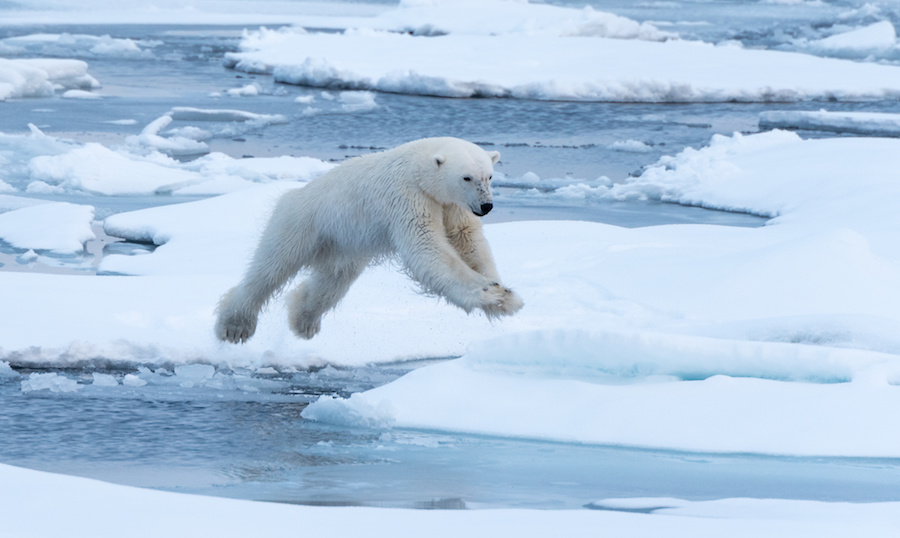Cecilia Jamasmie | August 13, 2021 |

Scientists are concerned about the effects in the Arctic ecosystem of a sudden flurry of exploration activity. (Stock image.)
Breakthrough Energy Ventures, a climate and technology fund backed by billionaires such as Microsoft’s Bill Gates, Amazon’s Jeff Bezos, and Bloomberg founder Michael Bloomberg, grabbed headlines this week for investing in Bluejay Mining (LON: JAY), which is searching for battery metals in Greenland.

While the market welcomed the news, pushing Bluejay’s shares up more than 25%, environmental scientists voiced their concern about the effects in the Arctic ecosystem of a sudden flurry of exploration activity.
“Essentially, they’re right on top of the ocean,” Jeffrey Welker, a professor at the University of Alaska Anchorage, who has spent more than 20 years studying the Arctic ecosystem of western Greenland, told The Daily Beast.
“That creates potentially some environmentally or ecologically dangerous situations with any contamination of that fjord … Any disturbance to that marine system through any activity could be catastrophic for that community.”
As global warming melts ice and exposes rich reserves, the scientific community has grown wary of the delicate balance between economic growth and environmental protection. Their concerns are backed by the United Nations’ Intergovernmental Panel on Climate Change (IPCC) report released this week, which shows human activity is changing the climate in unprecedented and sometimes irreversible ways.
AS GLOBAL WARMING MELTS ICE AND EXPOSES RICH RESERVES, THE SCIENTIFIC COMMUNITY HAS GROWN WARY OF THE DELICATE BALANCE BETWEEN ECONOMIC GROWTH AND ENVIRONMENTAL PROTECTION
“If we combine forces now, we can avert climate catastrophe. But, as today’s report makes clear, there is no time for delay and no room for excuses (…) It’s a code red for humanity,” UN Secretary-General Antonio Guterres said in a statement.
In Greenland, the now halted Kvanefjeld rare earths project became a flash point during the country’s elections in April, toppling the pro-mine Siumut party. The group had had an almost uninterrupted hold on power since 1979, when the nation gained home rule from Denmark.
For an economy largely dependent on fishing, tourism and a $600 million annual subsidy from Denmark, resource exploitation is seen as a way to boost government coffers and provide a path to independence. A poll carried out in 2018 by researchers from the University of Copenhagen showed that 67% of respondents supported an independent Greenland at some point in the future.
Other countries such as Canada, which after Greenland is the world’s largest high-Arctic land area, have also opened the area to miners and explorers.
Most of the islands in the Canadian Arctic are uninhabited, with human settlement scattered. While the archipelago makes up 40% of the country’s land mass, only about 150,000 people – less than 1% of the population, live there. Over half of its residents are Aboriginal, comprised of First Nations, Inuit and Metis peoples, who live in small, isolated communities.
“But what it lacks in people, the Canadian Arctic makes up for in resources,” writes mining analyst Richard Mills. “The sprawling region contains about 10% of the world’s fresh water and has world-class oil, gas and mineral deposits, including iron ore, copper, nickel and diamonds – hidden beneath frozen oceans and meters-thick glaciers that are thawing rapidly.”
A $1 trillion market
Humanity needs metals to propel the switch to a green economy. More than $1 trillion of investment will be required in those key commodities — aluminum, cobalt, copper, lithium and nickel — over the next 15 years just to meet the growing demands of decarbonization if global warming is to be kept to less than two degrees by 2050, according to a recent report by consultancy firm Wood Mackenzie.
Scientists counter-argue that present mechanisms may not sufficiently regulate the long-term impacts of mining.
Gates-Bezos-backed Kobold Metals is just one of the companies searching for battery metals in Canada. The quest began last year, when it acquired rights to an area of about 1,000 square km (386 sq. miles) in northern Quebec, just south of Glencore’s Raglan nickel mine.
There are dozens of projects to build battery metals mines, mainly lithium, nickel and cobalt, in Eastern Canada and to sift lithium from oilfield brines in Alberta. The country’s only lithium operation, North American Lithium in Quebec, was shut down in 2019 and is being marketed in a court-supervised process after the owner declared insolvency.
KOBOLD ARE MINING CREATURES FROM ROLE PLAYING GAMES
Kobold |
|---|
Kobolds are aggressive, inward, yet industrious small humanoid creatures. They are noted for their skill at building traps and preparing ambushes, and mining. Kobolds are distantly related to dragons and urds and are often found serving the former as minions. Kobolds have specialized laborers, yet the majority of kobolds are miners.
Alignment: Lawful Evil
Classes: Various
Homeland (s): Various temperate forests
Type: Natural humanoid (draconic)
No comments:
Post a Comment